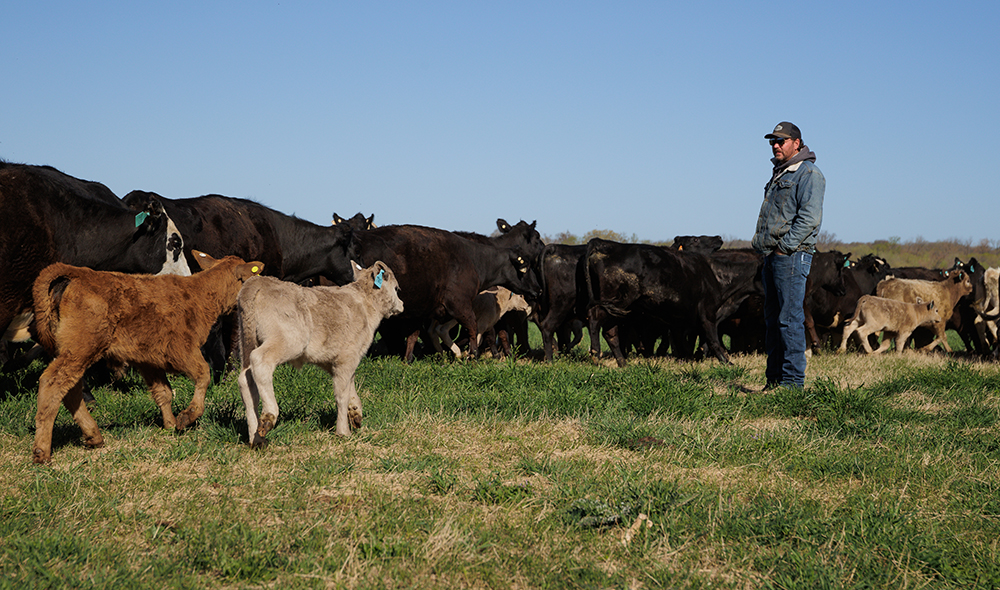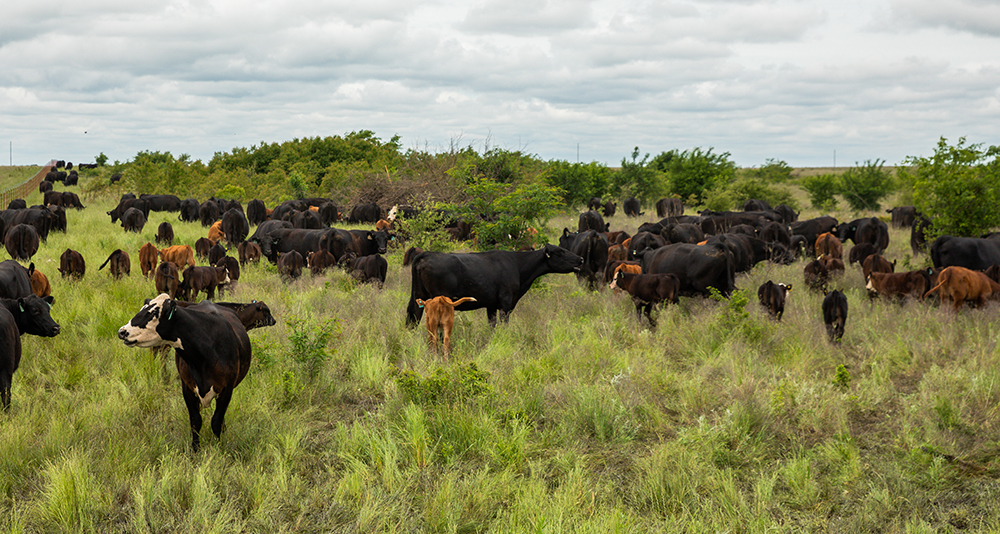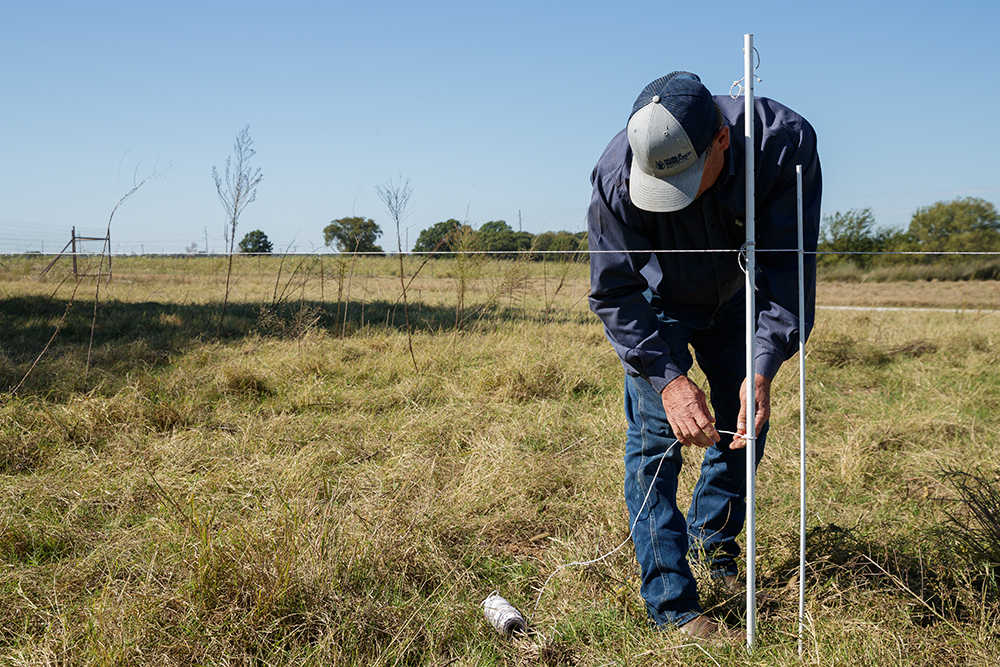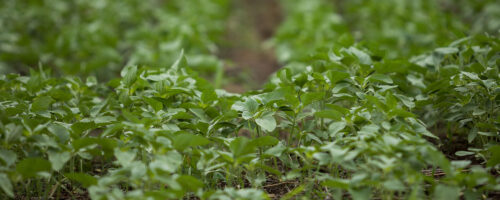Regenerative Grazing: Not As Time-Intensive As You Think
One Noble Research Institute ranch manager learned regenerative grazing doesn’t have to add to one’s work time – it just changes what you do with it. And the rewards are many.
When it came time to transition from conventional to regenerative grazing practices on Noble Ranches’ Red River Ranch in southern Oklahoma, ranch manager Kevin Pierce admits to wondering where he and his team were going to find the time to move fences and cows all the time to accomplish adaptive grazing.
Up until then, Pierce says, he and his team were busy fertilizing and spraying pastures; baling, hauling and stacking hay; feeding hay.
“That’s what consumed our time, driving tractors,” he says. “We were used to doing everything the conventional way.”
So, when the switch to regenerative was decided, “I told my boss that’s fine, but I don’t have the time to do all that and drive tractors eight or 10 hours a day. I may have said that more than once,” he admits. His boss replied that now grazing management was going to be the key piece of what they did, “and ‘we’re not going to be doing all those other things.’”
Going through training to understand the concept of managing for soil health and using adaptive grazing to give grass a chance to rest was essential, Pierce says.
“I think that’s the first part the person needs to understand, whether you read a book or go to a training session, is why he’s going to be doing these things,” he explains. “Not just because somebody says that’s a good idea.”
Still, they were entering unknown territory. After the training, Pierce went to his guys one morning and said, “Today’s the day we’re going to start. We’re going to pick a set of cattle (of the five separate herds they had) and do this.”
His team asked, “Are we really going to build fence every day?”
Yep. And they weren’t real excited about it.
But as they began, they saw the cattle responding to getting turned out into fresh paddocks, and found out it wasn’t so bad to move the posts and polywire and the cattle.
“The hardest part was just getting started,” he says. “Once we started, then they got excited about it and wanted to do more, and I wanted to do more.”

Results the first spring
The Red River Ranch crew started to see results right away the first spring they started with adaptive grazing, even before they made any direct changes to the soil or the land.
“We were just doing a whole lot better job of grazing than we had done in years past,” Pierce says. “We were giving these pastures a lot more rest, and it was tons better.”
Another change they made was to stop spraying herbicides, which felt risky at first.
“We were concerned that all we would have in the pastures was weeds. And the forbs did increase. But we saw that the cattle would eat a lot of these things, and not because we were making them. They had a desire to eat them.”
Last summer, they added sheep to the ranch, and saw that they could be a real asset when they followed the cattle in rotation.
“There’s a certain vine out here that the cows really don’t care to eat, and quite a bit of it, but the sheep loved it,” he says.

Fine-tuning fencing
When it came to setting up fencing for frequent moves, the ranch had the advantage of high-tensile, hot-wire fencing all the way around from which to build temporary fences, Pierce says. “We didn’t have to take a portable charger and a bunch of stuff around.”
They did, however, experiment to find user-friendly fence posts that that held up to daily moves – ring-top posts won out. He says thanks to the fact that the sheep they added were “hot-wire broke” first on another Noble ranch, “it was easy for us to just build a little different-style fence,” with posts that let them run a single polywire about 10 inches off the ground. They add a second wire in certain seasons to contain the sheep when they aren’t super happy about what they have to eat.

From tractors to Rangers
Regenerative ranching has moved the ranch staff out of the tractor seat for the most of the year and onto UTVs as they build fence and move the herd.
“Something that also concerned me about putting 400 head together was how am I going to look at them and see them every day,” Pierce says. “Well, if every one of them walks by you two or three at a time, you get a better look at ’em than you ever would with them scattered out in separate pastures.”
In addition, they’re so much gentler than they were before, he says. “Once you move them around for a week or so, it’s no different than them getting used to a feed truck. They know every day that you come, and they hear the Ranger, that there’s fresh feed right there waiting on them. They come to you.
“I could call them a half mile away to a new pasture, and they know I’m going to take them to something good.”

Bye-bye baling hay
Just as promised, Pierce and his team no longer spend the summers baling hay, nor do they spend the winter feeding it. Their Red River Ranch hay barn had about 400 bales in it when they switched to regenerative ranching two years ago, and it’s still full. As of mid-January, they hadn’t fed any hay to the cattle or sheep this winter, and hadn’t had to buy any hay for the ranch, as their winter forage continued to be the main food source.
They do use tractors to plant both cool-season and summer cover crops on the 600 acres of cropland formerly seeded to a monoculture of cereal rye for grazing. He says the main reason for the cover crops is to build soil health, and getting to graze them is a bonus. The same adaptive grazing practice goes for these acres, to maintain a healthy cover on the soil.

Not going back
“I’m not saying we’ve mastered what we’re doing yet, but after we figured out what we were doing and how it worked, and what we needed to do to make it work better, then we started combining all the herds, and that made it even easier,” Pierce says.
He says he doesn’t know why he had felt it was easier to run three different herds of steers on three different pastures side by side.
“We were making things harder on ourselves, but didn’t want to change, because that was the way we’d always done it.” For 28 years, in his case, having started on the ranch at age 19.
“Looking back on it now, I wouldn’t go back to the way we were doing it,” he says. “No way, whether we were trying to be regenerative or not.”


Comment
Leave a Reply
1 comment on: "Regenerative Grazing: Not As Time-Intensive As You Think""

Ben Berlinger
October 26, 2023Excellent article. Thanks for sharing!